
Reference
“WOMEN IN WAR: From Home Front to Front Line”
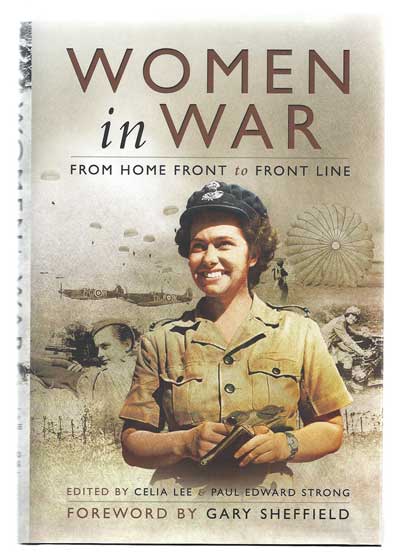
June 14, 2012
Edited by Celia Lee and Paul Edward Strong
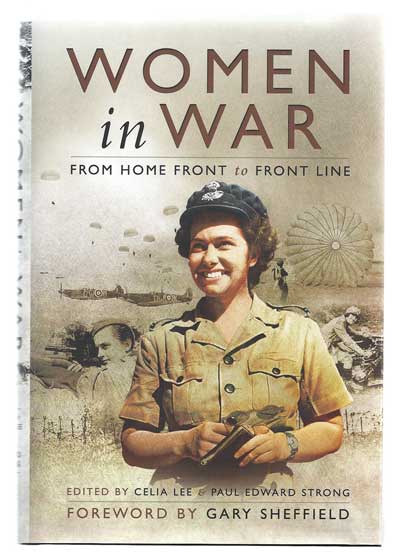 Major Imogen Corrigan writes:
Major Imogen Corrigan writes:
It should not be construed that women were immediately involved in manning searchlights during the Second World War (1939-45). In fact this was not to happen until the Prime Minister Winston Churchill’s approval was gained in September 1941.1 Men were increasingly needed for deployment elsewhere so the options were either to reduce the number of lights, a measure General Sir Frederick Pile (General Officer Commanding-in-Chief Anti-Aircraft Command 1939-1945) considered irresponsible beyond belief, or to consider employing women already serving in the Auxiliary Territorial Service (ATS). By using the ATS and Home Guard it was estimated that 71,000 Regular Gunners could be used on other duties. Inevitably there was anxiety about how the ATS girls would cope, often miles from anywhere on bleak sites with potentially dangerous work to do. In fact these fears proved groundless as General Pile noted: ‘They showed themselves more effective, more horror-inspiring and more blood-thirsty with their pick-helves than many a male sentry with his gun, as several luckless gentlemen found to their cost.’2
It should be noted that General Pile became one of the women’s greatest champions. He was a far-sighted man, many of whose ideas were what would now be seen as common sense. At the time, when he proposed that ATS working on gun sites should be issued with a more practical uniform and receive the equal rates of pay if they were doing the same job as a man, his ideas were described by Sir James Grigg (then Under-Secretary of State for War) as ‘breath-taking and revolutionary.’3 Undaunted, Pile asked a distinguished engineer, Miss Caroline Haslett, to give her opinion on women’s ability to work on gun sites and its associated tasks. She spent many Sundays watching women working at jobs usually done by men, and was able to report that they could do anything except actually fire the guns, and that was not for reasons of physique, but because public opinion would not accept it.4
Bearing in mind the general image of women in the army, great care was taken in setting up what would become the 93rd Searchlight Regiment, Royal Artillery. Where men and women worked together elsewhere in the army, several interviewees mentioned that men would find themselves with the initials SFM (Suitable for Mixed) or more intriguingly NFM (Not For Mixed) on their documents. Where individual men were chosen to work with women, they were vetted and not accepted unless they were happily married and trustworthy.
Follow this link for a gallery of photos from Women in War.

2025 International Churchill Conference
Defence writer Georgina Natzio writes:
On 28 July 1939, General Sir Frederick Pile took over as Commander-in-Chief, Anti-Aircraft (AA) Command to work under the leadership of Air Chief Marshal Sir Hugh Dowding, Commander-in-Chief, Fighter Command on the Air Defence of Great Britain (ADGB), working at Bentley Priory and its grounds, Stanmore, Middlesex. It was there in the Operations Room, from information gathered in from diverse sources by the neighbouring Filter Centre, that intruding enemy aircraft and their positions were counted, plotted and timed, and their headings and estimated times of arrival at likely targets calculated. Results were then disseminated back across country from the Centre to appropriate fighter-and-gun-operations rooms, then forwarded to command posts and on to gun, searchlight, and balloon sites, after which barrage balloons would be flown. If weather conditions were dark, or darkly overcast at nights, the massive searchlight beams would be trained upwards in the designated direction, and guns brought into action against the Luftwaffe’s aircraft, illuminated in the intense glare of the lights. Members of the Auxiliary Territorial Service (ATS) and the Women’s Auxiliary Air Force (WAAF) working in substitution jobs were closely involved in fighter-support operations from Bentley Priory onwards, all the way through to the sites mentioned. Anti-aircraft gunfire had to be very carefully integrated with Royal Air Force (RAF) fighter sorties directed against intruding enemy aircraft. To avoid accidentally downing RAF fighters hastily-scrambled into the skies above, suitable procedures and new communications’ links had to be devised or reconfigured each time the Gun Defended Areas (GDAs) were redrawn to meet changing Luftwaffe attack-patterns. Improved early-warning, radio direction finding (radar), prediction, fire-control and gun-laying equipment slowly began to be delivered – not a moment too soon after the friendly-fire disaster of the Battle of Barking Creek, 6 September 1939, revealed weaknesses in the reporting system.5 Looking back, at first the task must have seemed impossibly intricate. Later, with improved equipment settled in, ground/air defence organisation became much more efficient, flexible and mobile.
Dr Juliette Pattinson writes:
This chapter examines the extraordinary wartime experiences of a remarkable group of ordinary young women like Jos Mulder Gemmeke, a British-trained Dutch national who, during the Second World War was a courier in the Dutch resistance who were recruited by a British organisation to wage war against the Nazis. It uses published autobiographies, official documents, and interviews conducted both by myself and by the Imperial War Museum with surviving female agents to chronicle their wartime experiences, examining why they were considered suitable recruits, the training they undertook, their operational missions and for some their experiences during captivity. Jos Mulder Gemmeke was recruited by the Special Operations Executive (SOE), which was established in July 1940, following the invasion of much of Europe and the withdrawal of the British Expeditionary Force from Dunkirk. There was a recognition that the rules of war had changed and that the only way to defeat Nazism was to engage in unorthodox or ‘ungentlemanly’ warfare. Acts of sabotage and subversion, which were given increased prominence in Prime Minister Winston Churchill’s war strategy, were perceived as a ‘fourth arm’ in addition to the established military services. The SOE was fully incorporated into plans to liberate Europe and received substantial funds to undertake its work. It was tasked with recruiting, training and infiltrating agents into western Europe who, would themselves enlist, instruct, and equip local civilians in order to conduct sabotage operations which hampered the German war effort. Roughly 10,000 men and 3,000 women were employed by the SOE. Most of the women were members of the First Aid Nursing Yeomanry (FANYs) who, as coders and wireless operators, handled the coded messages sent by agents from the field. Yet some women, like Jos, were recruited specifically for an operational role. She had worked for the resistance producing clandestine newspapers since the occupation in May 1940, when she was aged seventeen. In 1944, she was taken to Britain for extensive training before returning to the Netherlands. She was one of just three women who were recruited by the Dutch section. The Belgian section recruited two female nationals, and the French-led Gaullist branch of SOE, called RF section, sent eleven Frenchwomen into France between May and September 1944. However, it was the British-run F[rench] section which pioneered the use of female agents two years previously.
Jonathan Walker writes:
The social background of many of the First Aid Nursing Yeomanry (FANYs) was middle or upper-middle class. Because the Corps recruited on personal recommendation, many of the applicants were known to existing FANYs from school days or social connections. These connections were not to be underrated as girls’ boarding schools in the 1930s all fostered the more recently parodied qualities of British ‘pluck’, self-reliance, and a stoic attitude in the face of adversity. However, this social exclusivity was never paramount. Violette Szabo, who was to become one of the bravest and most celebrated of the FANYs who operated in enemy-occupied territory, was the daughter of a London Brixton car dealer. For all these strictures, the overriding requirements for those girls picked to work in SOE were ‘quick brains and quiet tongues’.6
The creation of the SOE in 1940 boosted the fortunes of the FANY Corps, and they became inexorably linked. SOE was formed to assist resistance units and sabotage operations in enemy occupied countries. It had its own government minister and consequently access to the Prime Minister, Winston Churchill. However the organisation was not without its enemies and even from its early days, it competed with the Foreign Office and the Secret Intelligence Service (SIS) for resources and manpower. It required large numbers of drivers, coders, wireless operators, and even agents, but rather than draw these young women from the ATS (who were forbidden to use small arms), a strong link was established with FANY. Because FANY was a small, independent and volunteer organisation (as well as disciplined and uniformed) decisions as to its use and deployment could be made without having to confer with government departments. The Corps was also free of regulations that bound units like the ATS, and therefore would not be subject to ‘questions in the House of Commons’ — an event to be avoided by a highly secret organisation such as SOE. Such were the ties between the two organisations that, by late 1942, SOE was actually funding small allowances for its FANY volunteers from its own resources.7
Christine Halsall writes:
High on the banks of the River Thames near Henley stands an imposing hotel, which, during World War Two, housed the Allied Central Interpretation Unit, the headquarters of wartime Photographic Intelligence. Among those who worked there were a significant number of women who, collectively, held the secret of the war-winning part their organisation played in the Allied victory. They were members of one of the first truly joint service units in which Army, Navy, and Air Force personnel drawn from Britain and the Allied countries, worked together to provide intelligence from aerial photography.
…………………………………………………………………………………………..
Mollie Thompson was one of the first to join the Women’s Auxiliary Air Force (WAAF) after it was formed in June 1939. She was working in the Research Department of the Portland Cement Company, having graduated two years earlier from the University of London with a BSc (Economics). After a required six months in the ranks she was ordered to report to the Air Ministry for training on the first of the many wartime courses held to teach and practice the principles and techniques of photographic interpretation. Mollie, who knew nothing of photography before the war, assumed that she was picked for training because her degree studies had included map making and industrial development. Much of this fitted neatly into PI work, as did the experience of the geographers and archaeologists who had used aerial photography in their previous work. It was perhaps harder to recognise what skills the painter, the historian or the journalist brought to photographic interpretation. The answer was a keen eye for detail, visual memory, patience and curiosity.
John Lee writes:
It is a sign of how the likelihood of a new war with Germany was on many people’s minds that Admiral Sir Hugh Sinclair reputedly used £7,500 of his own money in 1938, to purchase the nicely secluded, but in handy distance of London, Buckinghamshire manor farm of Bletchley Park in Milton Keynes for the British secret intelligence service, MI6. It was in August 1939, that ‘Captain Ridley’s shooting party’ took residence – a code name for the advance party of the Government Code and Cypher School that was to colonise the house and its grounds.
It was known that the German military had adapted the commercial encoding machine called Enigma for their own use. Its complex interplay of five wheels, of which three were in use at any one time, each containing twenty-six letters, and using a transmitting and a receiving keyboard and an electrical plugboard, could generate 150 million million million encryptions. The sending and receiving machines were configured identically, using three-letter settings for the wheels in use that were changed every day, and messages were then broadcast in Morse code.
Before the Second World War started, Polish military intelligence had done a great deal of work to replicate an Enigma machine and, with French help, this was passed to the British. The British then went on to invent a machine called a ‘Bombe’ that took a coded message, running it through a complex series of wheels with the same number of letters as Enigma, and then testing all the possible combinations until it began to produce a German text message. The trick was to discern what the three-letter setting was for the day the message was transmitted. This involved a great deal of fiendishly difficult cryptography, looking for repeated patterns of letters, and the task was occasionally aided by some lapses by bored German personnel repeating standard messages with little attempt at concealment. ‘Nothing to report’ and ‘Heil Hitler’ were soon identified as such phrases, as were daily weather reports in identical format.
The encoded message was transmitted in blocks of four letters and part of the skills acquired by the codebreakers was in getting used to the style of message. The first and last groups of letters contained various bits of information identifying the sender and recipient, and most importantly the daily setting for the Enigma wheels. It was found that enthusiasts of crossword puzzles had a great aptitude for spotting these sorts of conundrum. Reading endless streams of garbled letters, looking for the vital three letters was a huge task. It was the ‘mechanisation’ of this process with the ‘Bombes’ that speeded up the process and led to so many vitally important decryptions. The resulting intelligence, called ‘Ultra’, could only ever be ascribed to a ‘Most Secret Source’. Even the British military commanders receiving this valuable information could never be told that it was coming from the daily breaking of the enemy codes. Nor could the Allies do anything so obvious that it would make it clear to the enemy that they were reading their messages on a daily basis. Nothing could be done to alarm the enemy or shake their belief that their codes were unbreakable. They had to be encouraged to go on using the same method of transmission.
As many as 10,000 people may have worked in these listening stations and 75 per cent of them were women of the three services – Women’s Royal Naval Service (WRNS), Women’s Auxiliary Air Force (WAAF), and Auxiliary Territorial Service (ATS). Without them there would be nothing on which the more well-known codebreakers could display their undoubted genius.
In contrast, the Germans had not at all prepared their women for war work. Paul Edward Strong writes:
In 1920, the NSDAP (Nationalsozialistische Deutsche Arbeiterpartei better known as the Nazi Party) manifesto made clear that they disapproved of women working. Hitler’s election speeches even included the boast that he would take 800,000 women out of the workforce. To support this policy, the NSDAP introduced legislation to encourage women to stay at home, such as the 1933 Law for the Encouragement of Marriage, which introduced loans and increased child benefit to act as an inducement for women to fulfil their ‘natural’ roles in society; what the Nazi Women’s League described as ‘servicing the needs of life’. The NSDAP even introduced a medal for mothers who provided the state with healthy children – ‘The Honour Cross of German Motherhood’. Hitler noted, in a speech in 1936, that ‘the woman has her own battlefield. With every child she brings into the world, she fights her own battle for the nation’. These limits on the role of women were further codified in the Reich Labour Service Law of 1935, and the secret Guidelines for the Employment of Women in War in 1938. The professions were the hardest hit by these policies, with female doctors, civil servants and members of the judiciary being summarily dismissed and the number of female students dropping by 60 per cent during the NSDAP ‘reforms’. Like most NSDAP propaganda, such statements were contradicted by the harsh realities of re-establishing German industry, and there were 50 per cent more women in industry in 1939, than there were in 1933.8
While the NSDAP extolled the domestic role of women, the propaganda machine also gleefully focused on the rare exceptions to the rules laid down by the state. Such individuals, where they displayed remarkable talents, were cited as exemplars that showed off the potential of Nazi women, compared to their pampered and fashion obsessed sisters in France and America.
Grace Filby summarises her chapter:
Winston Churchill (1874 – 1965) led the country in fighting threats to its peace, health and prosperity, only to face new threats from 1945 onwards – the dark political conflict and military tension of the Cold War with Russia.
The author finds a recurring theme of bacterial infections and the need to combat them in both soldiers and civilians during peace and wartime.
During the Cold War, biotechnologists in Georgia, mostly women, worked for the advancement of microbiology, medicine, and the reduction of the global threats of biological weapons, making a huge difference in the Former Soviet Union throughout those forty-six years of secrecy and information blackout.
A clue to where we look is identified as ‘one symptom of unfinished business’ after the Cold War.9 The exotic country of Georgia is over 2,000 miles away from the United Kingdom. It is one of the places the author visited in 2007 as a Winston Churchill Travelling Fellow,10 researching the health value of bacteriophages.
The George Eliava Institute of Bacteriophage, Microbiology and Virology is now named in honour of its founder. There, in the capital city of Tbilisi, amassed since 1923, is a vast library of over 500 historic books, articles and dissertations, written by scientists and physicians in Russian and Georgian. The science and medicine it contains have revolutionised the prevention and treatment of disease behind the Iron Curtain, even without access to Western antibiotics. There is also an extensive refrigerated collection of microbes – bacteria and viruses of many, many strains.
The word ‘bacteriophage’ in the title of the institute refers to the vast subgroup of water-borne viruses that infect and destroy only bacteria, not plants, animals or humans.
Scientist George Eliava mysteriously disappeared one day in 1937, never to be seen or talked of again during the Soviet regime. He had been executed.
From then onwards, all the way through to the 1960s, Eliava’s former female assistant Elena Makashvili took up the reins. Devotedly and forcefully, Elena would play a major role in training and leadership, setting high standards in competence and scientific discipline. Clearly Elena was inspired and driven by bacteriophage research.
On visiting Georgia it was evident that the Eliava Institute attracts visitors and enquirers from all over the world, and has enormous potential for the power of good. Not only are bacteriophage used throughout entire hospitals but they are available without prescription in pharmacies for just 9 lari (about £3) for a box of ten vials, suitable for common skin or intestinal infections. Laboratory work enables unusual bacterial infections to be matched to their specific phage.
Mrs Mary (Minnie) S. Churchill (edited Celia Lee):
Mrs Mary (Minnie) S. Churchill was invited to give the address at the Air Transport Auxiliary Association’s (ATA) Annual Dinner in 2002, in the Officers Mess, RAF Lyneham, Wiltshire. The ATA was staffed by men and women pilots, who, during the Second World War, ferried aircraft, delivering them to where they were required for male RAF pilots, who went into action over the skies of Britain, fighting the German Luftwaffe. Minnie dedicated her talk to her late father, Sir Gerard d’Erlanger, Commodore of the Air Transport Auxiliary service, and to the ATA, and all those wonderful and very brave pilots who were pathfinders in those dark and dangerous days of the Second World War. Minnie’s talk brings the story of the progress made by women in war up to the present day and is a fitting finale to this collection of studies.
“Although the majority of those serving in the ATA were men, I am responding this evening on behalf of the women, and therefore I will concentrate on the role they played. I like to think that the role played by the ladies in ATA in those dark war days, helped to pioneer the way for women of today. They showed the leaders that women were capable of fulfilling so many demanding and different roles. As Hal Ewing said in his speech they served not only as pilots but also as mechanics, cooks, operations officers, telephone operators, secretaries, and motor transport drivers – all vital links in the work of ATA. In her book: Spreading My Wings, our Commodore Diana Barnato-Walker11 gives us some very interesting facts which I would like to quote for those who are not familiar with them. By the end of the war ATA had ferried 309,011 planes, and flown some 414,984 hours. In 1944, there had been 659 ATA pilots of whom 108 were women. No fewer than 174 people gave their lives, of whom 16 were women. The ATA pilots came not only from the United Kingdom but were of all nationalities: Americans, Canadians, South Africans, Australians, New Zealanders, Indians, Poles, French, Dutch, Danish, Czechoslovak, Spanish, Irish, Argentinean, Norwegian, Swedish, there were even pilots from Siam, Chile, China, Ceylon, Estonia and Ethiopia.”
-
-
F. Pile, Ack-Ack, London: Harrap & Co., 1949 p.222.
- Ibid., p.226.
- Ibid., p.188.
- Ibid., p.186.
- Delve, Fighter Command, p.192. Dobinson, AA Command, pp.169; 289-291.
- M.R.D. Foot, SOE: An Outline History of the Special Operations Executive 1940-1946, London: Pimlico, 1999, pp. 75—7.
- ‘Historical Development of the FANY Unit in SOE’, Sir Colin Gubbins Papers, 3/2/57-83, Imperial War Museum, London (hereafter IWM).
- Jill Stephenson, Women in Nazi Germany, London: Longman, 2001, p.53, see also Franz W. Seidler, Blitzmädchen: Die Geschichte der Wehrmachthelferinnen im Zweiten Weltkrieg, Bonn: (Bernard & Graefe Verlag, 1996,) and Gordon Williamson, World War II German Women’s Auxiliary Services, London: Osprey, 2003; see also R.A. Ratcliff, Delusions of Intelligence: Enigma, Ultra, and the End of Secure Ciphers, Cambridge: Cambridge University Press, 2006, for criticism of the low status of women in the German Intelligence service in the Second World War WWII.
- Bridget Kendall, BBC Diplomatic Correspondent, ‘Cold War and its Legacy’, conference, Churchill College, Cambridge, 19 November 2009.
- The Winston Churchill Memorial Trust awards grants to British Citizens, resident in the UK, and from all walks of life. This enables them to travel overseas to acquire knowledge for the benefit of their profession and community, the UK as a whole, and themselves.
- In 1963, Diana Barnato-Walker was the first British woman to break the sound barrier, flying one of the RAF’s new supersonic Lightnings. In 2002, Diana was 86 years of age and still flying. She died in 2008 aged 90 years.
-
Reprinted with kind permssion of the publisher. Order your copy of Women in War here.
Subscribe
WANT MORE?
Get the Churchill Bulletin delivered to your inbox once a month.
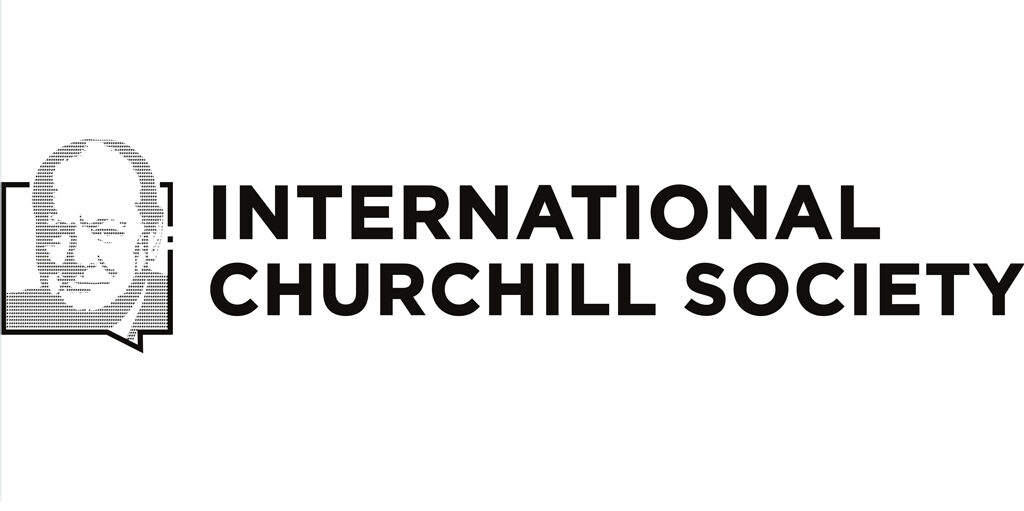
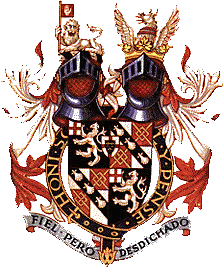
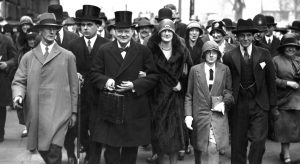

 : ICS OFFICIAL
: ICS OFFICIAL |
|

 Churchill’s favorite wartime carriage, “L
Churchill’s favorite wartime carriage, “L



